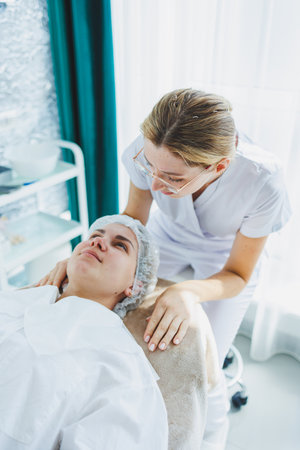Introduction: Navigating Pigmentation Challenges in the UK
Across the United Kingdom, skin pigmentation concerns are far more common than many might assume. From subtle sun spots to more pronounced melasma and post-inflammatory hyperpigmentation, these conditions affect people of all backgrounds and ages. The unpredictable British weather, with its mix of cloudy days and occasional sunny spells, often leads to confusion about sun protection, which can exacerbate pigmentation issues over time. For many living in the UK, pigmentation is not just a cosmetic issue; it impacts self-esteem, social interactions, and even professional confidence. The visibility of uneven skin tone or dark patches can cause individuals to feel self-conscious, prompting some to cover up with makeup or avoid social situations altogether. Motivated by these emotional and practical challenges, an increasing number of people are seeking professional treatment options—ranging from advanced skincare products to cutting-edge dermatological procedures—hoping to reclaim their confidence and achieve a more even complexion. In this article, we explore real patient journeys from across the UK, highlighting their struggles and successes as they navigate the world of pigmentation treatment.
2. Recognising the Signs: Early Experiences and Initial Reactions
For many in the UK, the journey with pigmentation issues often begins quietly—perhaps with a new patch on the cheek or a faint mark that simply won’t fade. Personal accounts from across England, Scotland, and Wales reveal that these early signs are often noticed during daily routines, such as applying makeup in the morning or catching one’s reflection on a rainy commute. The initial response can range from mild curiosity to genuine concern, especially when changes persist or darken over time.
Noticing the Difference: Everyday Anecdotes
Sarah from Manchester recalls her first encounter with pigmentation: “I spotted a small brown spot near my temple while getting ready for work. At first, I thought it was just leftover foundation, but it wouldn’t wipe away.” For others like Raj in Birmingham, friends were the first to notice subtle changes: “My mate at five-a-side pointed out a patch on my forehead under the floodlights. I hadn’t paid much attention until then.”
Emotional Responses and Self-Reflection
The emotional reactions to noticing pigmentation can be mixed. Some experience embarrassment or self-consciousness—especially if marks are visible and difficult to conceal. Others feel frustrated by the unpredictability of skin changes, wondering if it’s down to stress, sun exposure during rare sunny spells, or even dietary habits. A sense of uncertainty is common, as most people aren’t immediately sure if professional help is needed.
First Steps Before Consulting Professionals
Before seeking expert advice, many people turn to their immediate support networks for guidance. Family members might share home remedies—ranging from lemon juice applications to herbal teas—while friends recommend over-the-counter creams or suggest trying natural oils. In some cases, informal chats with local GPs provide initial reassurance or prompt referrals for further assessment. The table below summarises common pre-professional actions taken by individuals:
| Advice Source | Typical Suggestions | Frequency Mentioned |
|---|---|---|
| Family & Friends | Home remedies (lemon juice, aloe vera), folk advice (“let it fade naturally”) | Very Common |
| GPs (General Practitioners) | Basic skincare advice, recommendation of sunscreen use, possible referral to dermatology | Common |
| Online Forums & Social Media | User-shared product reviews, before-and-after photos | Increasingly Common |
| Chemists/Pharmacists | Over-the-counter creams and serums | Occasional |
This early stage of the journey is marked by exploration and adaptation as individuals try to understand their skin’s behaviour and weigh up when to seek more formal medical input. The collective wisdom passed around British homes and communities forms an important part of the initial approach to managing pigmentation concerns.
![]()
3. Exploring Treatment Options: Choices on the NHS and Private Clinics
For individuals in the UK seeking treatment for pigmentation issues, the journey often begins with a visit to their local GP surgery. The British healthcare system offers a structured pathway, but the experience can vary significantly depending on whether care is accessed through the NHS or private clinics. Typically, patients approach their GP first to discuss concerns about skin discolouration—whether it be melasma, sun spots, or post-inflammatory hyperpigmentation. The GP will assess the condition and may offer initial advice or prescribe topical treatments such as creams containing hydroquinone or retinoids. If the pigmentation appears complex, persistent, or is causing significant distress, a referral to an NHS dermatologist might be made.
However, access to specialist dermatology services on the NHS is governed by strict criteria and waiting lists can be long, especially for conditions considered non-urgent or cosmetic in nature. Many patients report waiting several months before seeing a specialist. This delay, combined with limited availability of certain advanced treatments on the NHS (such as laser therapy), leads some individuals to consider private options.
Private clinics across the UK offer faster access to dermatologists and aesthetic practitioners, with consultations often available within days or weeks. These clinics can provide a wider range of treatments—including chemical peels, intense pulsed light (IPL), and medical-grade skincare—that are not routinely available through the NHS. However, cost becomes a key factor in decision-making; private treatments can be expensive and are rarely covered by insurance for cosmetic indications.
The choice between NHS and private care is influenced by factors such as severity of pigmentation, impact on mental well-being, financial resources, and personal priorities. Some patients opt for a blended approach: starting with NHS advice and then supplementing with targeted interventions from reputable private clinics. Others rely entirely on one pathway based on what feels most accessible and appropriate for them.
Throughout these journeys, British patients often share stories of weighing up convenience against cost, balancing evidence-based medicine with newer aesthetic technologies, and navigating a system where clinical need is carefully assessed alongside patient preference. Understanding these pathways—and how they differ between public and private sectors—can empower individuals to make informed decisions about their pigmentation treatment in the UK.
4. The Treatment Process: What to Expect from Consultations to Recovery
The journey towards clearer, more even-toned skin is not a one-size-fits-all experience. For many in the UK, successful pigmentation treatment begins with a well-structured process that puts patient care and open communication at the forefront.
Initial Consultation: Laying the Foundation
Your first step typically involves a thorough consultation with a dermatologist or qualified aesthetic practitioner. Patients who have gone through this journey often stress the importance of coming prepared with questions and being open about medical history, skin concerns, and expectations. During this meeting, professionals will usually:
- Assess your skin type and pigmentation issues (melasma, sun spots, post-inflammatory hyperpigmentation, etc.)
- Discuss possible triggers—such as sun exposure or hormonal changes
- Explain available treatment options and realistic outcomes
Common Procedures Used in the UK
| Treatment | Description | Typical Recovery Time |
|---|---|---|
| Chemical Peels | Application of acids (like glycolic or salicylic acid) to exfoliate damaged skin layers and fade pigmentation | 3–7 days (mild); up to 14 days (deep peels) |
| Laser Therapy (e.g., Q-switched lasers) | Targeted light breaks down pigment without harming surrounding tissue; multiple sessions may be needed | 1–5 days of redness/swelling |
| Prescription Topicals (e.g., hydroquinone, retinoids) | Creams that inhibit melanin production and speed up cell turnover; often used alongside other treatments | Daily application for several weeks to months; minimal downtime |
| Microneedling | Tiny needles stimulate collagen production and help topical products penetrate more effectively | 2–4 days of mild redness/peeling |
Navigating Expectations and Communication
Patients often highlight how crucial it is to maintain honest dialogue throughout the process. Setting realistic expectations—knowing that results take time and that some treatments may need repeating—is key. Many recount feeling more confident when their practitioners provided clear aftercare instructions and regular follow-up appointments.
Top Recovery Tips from Experienced Patients
- Sun Protection: Use broad-spectrum SPF daily—even in British weather—to prevent recurrence.
- Avoid Picking: Let treated areas heal naturally to reduce risk of scarring.
- Hydration & Gentle Care: Use fragrance-free moisturisers and avoid harsh scrubs for at least a week post-procedure.
- Patience is Essential: Noticeable improvement often takes several weeks or months; persistence pays off.
- Regular Check-Ins: Attend all scheduled reviews so adjustments can be made if necessary.
Summary Table: Key Elements of the Patient Experience in the UK
| Stage | What to Expect |
|---|---|
| Consultation | Bespoke assessment, discussion of goals, clear explanation of options |
| Treatment Sessions | A mix of in-clinic procedures and homecare; variable comfort levels depending on method used |
| Aftercare & Recovery | Diligent skincare routine, sun protection, regular check-ins with provider |
| Long-Term Results | Sustained improvement with ongoing maintenance and lifestyle adjustments as recommended by professionals |
This structured approach helps patients across the UK navigate pigmentation treatment with greater confidence—leading to higher satisfaction rates and inspiring personal stories of transformation.
5. Outcomes and Reflections: Life After Treatment
For many UK patients, the outcomes of pigmentation treatment have been transformative both physically and emotionally. The visible improvements are often striking; before-and-after comparisons consistently reveal a significant reduction in uneven skin tone, dark spots, or melasma patches. Individuals who previously relied heavily on concealing makeup or avoided social situations due to self-consciousness now report a boost in confidence and willingness to engage more fully in daily life.
Visible Results and Renewed Confidence
Patients share that their skin not only looks clearer but also feels healthier overall. This renewed clarity has led to positive changes in how they present themselves at work and in social gatherings. One patient from Manchester described feeling “liberated” after years of covering up her cheeks, while another from London mentioned being complimented for her “glowing complexion” for the first time in years.
Emotional Wellbeing
The emotional journey is just as important as the physical one. Many patients reflect on the anxiety and frustration caused by pigmentation issues and note a marked improvement in mood and self-esteem post-treatment. A sense of relief is common, with individuals expressing gratitude for both the medical support and the understanding approach of UK clinicians, who often tailor care to each person’s unique needs.
Ongoing Skin Management
Treatment does not mark the end of the journey; ongoing skin management plays a crucial role in maintaining results. Patients are encouraged to adopt tailored skincare routines—usually including high-factor SPF, targeted serums, and regular check-ins with dermatologists. Those who maintain these habits consistently report longer-lasting results and fewer relapses of pigmentation.
Feedback on Patient Experience
The feedback regarding UK-based treatment pathways is overwhelmingly positive. Patients appreciate clear communication, realistic expectations set by practitioners, and access to follow-up care. The collaborative relationship between patients and healthcare providers is frequently cited as a key factor in successful outcomes.
Looking Forward
For most, life after treatment means new opportunities rather than limitations. Whether it’s feeling comfortable without makeup, pursuing professional goals with renewed vigour, or simply enjoying time outdoors without worry, successful pigmentation treatment has opened doors to improved quality of life across the UK.
6. Shared Advice: Practical Tips from the UK Community
Throughout the UK, patients who have successfully managed pigmentation concerns are keen to share their hard-earned advice with others embarking on a similar journey. Drawing from their personal experiences, these individuals have developed practical routines and discovered invaluable resources that can ease the process for newcomers.
Trusted Resources for Reliable Information
Many UK patients highlight the importance of seeking information from reputable sources. The NHS website is frequently recommended for its balanced, up-to-date guidance on skin health and pigmentation treatments available through public healthcare. For those interested in private care or advanced therapies, the British Association of Dermatologists (BAD) offers expert-led advice and directories of accredited practitioners across the country.
Aftercare Routines That Work
Consistency in aftercare is repeatedly cited as crucial. Patients emphasise using broad-spectrum SPF daily, regardless of the weather—a particularly relevant tip given the UKs often cloudy climate. Gentle cleansing, avoiding harsh exfoliants, and following a tailored moisturising routine are common themes. Several individuals mention patch-testing new products first to avoid reactions and keeping a simple skincare routine to reduce irritation.
Community Support Networks
Support from others facing similar issues has proven invaluable for many UK residents. Online forums such as those hosted by the British Skin Foundation offer spaces to ask questions and share experiences without judgement. Local support groups, sometimes connected through dermatology clinics or social media platforms like Facebook, also provide comfort and solidarity—reminding patients they are not alone on their journey.
Lessons Learned: What UK Patients Want Others to Know
Patience is a virtue echoed by all. Progress can be slow, and results may vary depending on individual skin types and the chosen approach. Seeking professional advice before starting any treatment is universally advised, as is documenting progress with photographs to track subtle improvements over time. Ultimately, embracing community wisdom and relying on trusted UK-specific resources can transform what may seem an overwhelming process into one marked by hope and practical support.


